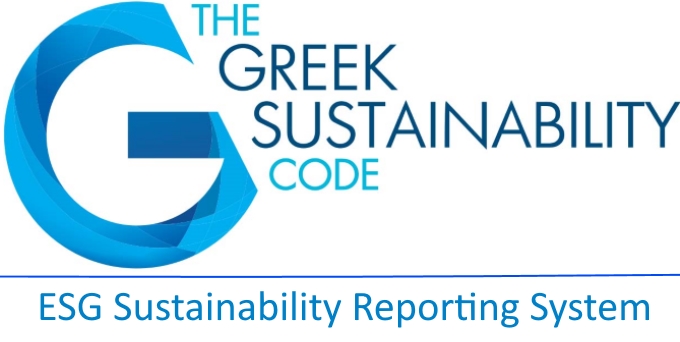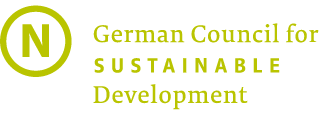LEVEL A
The following table has all the information for selected LEVEL A
PILLAR: STRATEGY
1. Strategic, Analysis & Action
CRITERIA DESCRIPTION
TOPICS
The Organization discloses how it analyzes the opportunities and risks of its major activities in the context of Sustainable Development.
The Organization explains what concrete measures it is undertaking to operate in compliance with the essential and recognized sector-specific, national and international standards.
The Organization explains what concrete measures it is undertaking to operate in compliance with the essential and recognized sector-specific, national and international standards.
- Whether you have a strategy for Sustainable Development & Corporate Responsibility of your Organization.
- What the main elements of this strategy are.
- What opportunities this strategy gives rise to for the Organization.
INDICATORS
GRI
Not applicable
Not applicable
EFFAS
Not applicable
Not applicable
PILLAR: PROCEDURES
6. Rules & Processes
CRITERIA DESCRIPTION
TOPICS
The Organization discloses how the Sustainable Development & Corporate Responsibility strategy is implemented in its operation by way of rules and processes.
- Which are the rules and processes that are used to help control and implement the Sustainable Development &Corporate Responsibility strategy.
- How these rules and processes are implemented by the relevant departments of the Organization (how the Sustainable Development & Corporate Responsibility strategy is integrated in the daily tasks).
INDICATORS
EFFAS
Not applicable
Not applicable
8. Incentive and reward systems for Sustainable Development
CRITERIA DESCRIPTION
TOPICS
The Organization discloses how target agreements and remuneration schemes for executives and employees are also geared towards the agreed goals and how they are aligned towards long-term value creation. It discloses the extent to which the achievement of these goals forms part of the evaluation of the top managerial level (board / managing directors) conducted by the monitoring body (supervisory board / advisory board).
- Whether the Organization has a compensation system in which Sustainable Development & Corporate Responsibility goals are integrated or can be integrated, and if not, whether such a thing is planned.
- Whether and how the achievement of the goals is monitored by the Organization’s Boards/Committees.
- How the leave of absence for social obligations (CSR purposes) or the chance to implement one’s own ideas in the Organization are regulated (if other incentive or reward systems – including non-financial ones – exist).
INDICATORS
EFFAS
Not applicable
Not applicable
PILLAR: SOCIETY
17. Human Rights in the supply chain
CRITERIA DESCRIPTION
TOPICS
The Organization discloses what measures it takes for the supply chain with the aim of ensuring that human rights are respected globally and that forced and child labour as well as all forms of exploitation are prevented.
- Policies and procedures for supply chain control.
- Measures taken for the effective abolishment of human rights infringement incidents in the supply chain.
- Whether and how the Organization ensures that its suppliers adhere to basic human rights.
INDICATORS
GRI
SRS 412-3:
Significant investment agreements and contracts that include human rights clauses or that underwent human rights screening.
SRS 412-1:
Operations that have been subject to human rights reviews or impact assessments.
SRS 414-1:
New suppliers that were screened using social criteria.
SRS 414-2:
Negative social impacts in the supply chain and actions taken.
SRS 412-3:
Significant investment agreements and contracts that include human rights clauses or that underwent human rights screening.
SRS 412-1:
Operations that have been subject to human rights reviews or impact assessments.
SRS 414-1:
New suppliers that were screened using social criteria.
SRS 414-2:
Negative social impacts in the supply chain and actions taken.
EFFAS
S07-02ΙΙ:
Percentage of total facilities certificated according to SA 8000 standard.
S07-02ΙΙ:
Percentage of total facilities certificated according to SA 8000 standard.
20. Corruption prevention and alleviation
CRITERIA DESCRIPTION
TOPICS
The Organization discloses which measures, standards, systems and processes are in place to prevent unlawful conduct and, in particular, corruption, and how they are verified. The Organization depicts how corruption and other contraventions in the company are prevented and exposed and what sanctions are imposed.
- Policies and procedures for corruption prevention and alleviation.
- Whether the Organization already has anti-corruption policies or not.
- If the Organization already has anti-corruption policies, how it monitors their compliance.
- Who is responsible for the issue within the Organization.
- Whether and how the Organization’s managers and employees are aware of this topic.
- Incidents of non-compliance and money value of important sanctions.
INDICATORS
GRI
SRS-205-1:
Operations assessed for risks related to corruption.
SRS-205-3:
Confirmed incidents of corruption and actions taken.
SRS-419-1:
Non-compliance with laws and regulationsin the social and economic area.
SRS-205-1:
Operations assessed for risks related to corruption.
SRS-205-3:
Confirmed incidents of corruption and actions taken.
SRS-419-1:
Non-compliance with laws and regulationsin the social and economic area.
EFFAS
V01-01:
Expenses and fines on filings, law suits related to anti-competitive behavior, anti-trust and monopoly practices.
V02-01:
Percentage of revenues in regions with Transparency International corruption index below 60.
V01-01:
Expenses and fines on filings, law suits related to anti-competitive behavior, anti-trust and monopoly practices.
V02-01:
Percentage of revenues in regions with Transparency International corruption index below 60.






